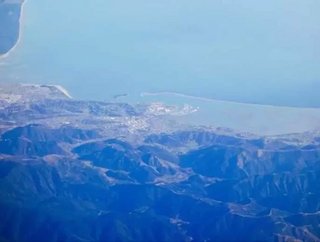10 things you should know about TTR and the South Taranaki Bight

Some big news in the New Zealand mining industry this week has seen the Department of Conservation “give the green light” to a mining company that plans to mine in the South Taranaki seabed.
The mining company in question is Trans-Tasman Resources (TTR), which proposes a project to excavate up to 50 million tonnes of sand each year, separating iron ore from the sediment and returning 90 percent of that sand back into the sea bed.
Here are 10 things you need to know about the South Taranaki Bight Project
1 – As noted above, TTR has proposed a project to mine iron ore from the South Taranaki Bight coastline, a large bay that extends south and east from the south coast of Taranaki in New Zealand’s North Island. The actual project area is off the coast of Kakaramea and Manutahi in New Zealand’s Exclusive Economic Zone (EEZ). This is governed by the Continental Shelf (Environmental Effects) Act 2012 which is often known as the EEZ act.
2 – The very first step for TTR will be commissioning an entirely new integrated mining vessel (IMV). This vessel will be built to be durable in all weather conditions, which will be important in the productivity of the operation. Two sea bed crawlers will be built, though only one will be in operation at any time. The seabed crawler will be tethered to the IMV and controlled remotely, move along the deposits and transfer the iron sand back to the IMV.
The IMV will contain a processing plant, a desalination plant and power generation. TTRS will also commission a trans-shipment vessel, which will be used to store iron ore and transfer it from the IMV to bulk export vessels.
3 – Mining will actually be carried out in blocks of 900m x 600m every 30 days. The sea crawler will move along the deposits and will dredge to the full depth of ore rich sediment. The sediment will then be transferred to the IMV, making only one sweep over any section of seabed at any time.
4 – The project is designed to give as much as it takes. Through a deposition pipe, the sand from which ore has been extracted will be backfilled as quickly as it is transferred out of the seabed.
5 – Through magnetic separation and a grinding mill for some of the sediment, the iron ore concentrate will be separated from the sand aboard the IMV. No heat, chemicals or additives will be used in the process – just seawater.
6 – Once the iron ore concentrate is transferred, as a slurry, to the trans-shipment vessel it will be given something of a bath in fresh water from the desalination plant. This is to remove any salt from the iron ore before being loaded into an export vessel. This entire process takes place entirely at sea, with the iron ore shipped directly from the plant to global markets.
7 – Should you take a walk-in Taranaki you would never know such a large-scale operation is even taking place. With the project, completely at sea and in the specifically designed vessels, the entire project will not be visible at all from the shore.
8 – The project isn’t in operation just yet, but that hasn’t stopped TTR spending the best part of six years to undertake a highly detailed baseline study programme to truly assess and understand the possible environmental implications of the project. This has seen over 35 reports with close collaboration from the New Zealand National Institute of Water and Atmospheric Research (NIWA) to guide the refine the extraction and process methodology to ensure minimal potential environmental effects.
9 – It’s not just the environmental impacts that need to be considered, there’s a local economy that will benefit from the project. For New Zealand, TTR has proposed that it will see an increase in GDP by $150m per annum, while also increasing employment opportunities by 1,600. For the Taranaki Region, in particular, a $50m increase in GDP per year, as well as employment and training opportunities.
10 – TTR is currently awaiting marine consent from the EPA. Should it receive full consent to proceed with the project it is believed it will take around two years to finance, build and commission the operation, with the very first export production targeted for mid-2018.
The October issue of Mining Global Magazine is live!
Follow @MiningGlobal
Get in touch with our editor Dale Benton at [email protected]






